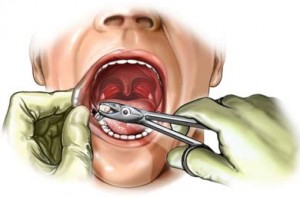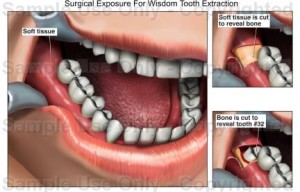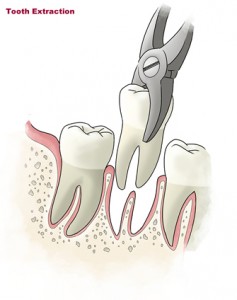Perhaps the most affordable option for dealing with a severely damaged or infected tooth is dental tooth extraction. Tooth extraction (also known as exodontias) is the removal of tooth from the mouth. The majority of the public tend to visit their dentist for a tooth extraction more often than any other dental procedures. Extraction of teeth is done for a variety of reasons, as of the following:
Indications for teeth extraction
- Cavities that cannot be restored
- Pulpitis or inflammation of the pulp
- Periodontal or gum disease
- Periapical infection (infection at the tip of the tooth root) or dental abscess
- Fracture of the tooth
- Failure of root canal treatment
- Dental erosion, aberration, attrition
- Orthodontic reasons
- Prosthodontic considerations to facilitate dentures
- Impacted teeth, in most cases the wisdom tooth
- Teeth involved with cyst and tumors
- Teeth in the direct field of radiotherapy can be removed as a preventive measure
- Teeth in the line of jaw fracture
- Cosmetic reasons, teeth of poor appearance
- Supernumerary or extra teeth that interfere with normal biting
Methods of tooth extraction
Tooth extractions can be divided into two types:
- Intra-alveolar or simple extraction – Simple tooth extractions are done on teeth that are easily seen in the mouth, usually under local anesthetic. They require only the use of dental instruments to elevate and/or grasp the visible portion of the tooth. The route of approach is solely from inside the tooth socket within the jaw bone.
- Transalveolar extraction or surgical method – Surgical extractions involve the removal of teeth that cannot be easily accessed due to the tooth being not fully erupted or the tooth has broken under the gum line. In the surgical method, an incision is almost always required. Here bone is removed around the tooth by dissection though the jaw bone after the overlapping soft tissues are retracted as a gum flap.
Pre-operative assessment
Before a tooth extraction is done, an assessment is done on the individual and the tooth involved.
Crown of the tooth
- presence of fractured or carious tooth would make the tooth difficult to grasp and more likely to fracture during removal,
- presence of large fillings weaken the tooth,
- attrition of crown indicates a brittle tooth with dense bone,
- accessibility of tooth in the mouth.
Root of the tooth
- size (length and width),
- number of roots,
- shape of individual roots,
- mobility as assessed clinically,
- hypercementosis (excessive formation of root cells that make the root bulkier),
- ankylosis (fusion of the tooth to the jaw bone),
- resorption (the process of breaking down of the root) ,
- fracture of root,
- vitality of the pulp / presence of root filling or post can weaken the tooth
Surrounding bone
- bone level around the root,
- loss of bone due to pathological lesions like tumors or cysts (potential risk of pathological fracture),
- texture of bone as judged by x-ray or radiograph taken.
Nearby structures
- position of nerves nearby the tooth,
- maxillary antrum (the largest air-filled cavity in the face)
Assessment of patient
- Level of cooperation – for individuals with irreconcilable dental phobia, general anesthesia or intravenous (IV) sedation is a better option for tooth extraction. Sedation as an adjunct of local anesthesia is an option for individuals who want to co-operate but still cannot due to their anxiety.
- Medical history – certain individuals may be at risk of complications from extractions therefore a complete medical history should be assessed before any dental extraction is performed. Medical conditions that are of concerned include bleeding problems, immunocompromised individuals, ischemic heart disease, history of heart attack, high risk patients with infective endocarditis, and individuals who have a previous history of radiotherapy to the jaws are at risk of osteoradionecrosis.
Mechanical principles of tooth extractions
The following principles are used during the extraction of teeth:
- Applying a displacing force to a tooth or root – there are two types of force application: direct application using dental forceps, in which the blades grip the root; or indirectly via a fulcrum (also called a point of application) on the bone adjacent to the root using elevators.
- Expansion of the tooth socket – lateral displacing movements is used to gently widen the socket to allow easy removal of tooth.
- Removal of bone surrounding the root – if necessary burs or chisels are used to remove bone around teeth that are difficult to grasp.
- Sectioning of tooth – sectioning either the root or the crown from the root is done if the path of tooth withdrawal is blocked or if the roots are widely spread out.
To be continued in Part 2.


